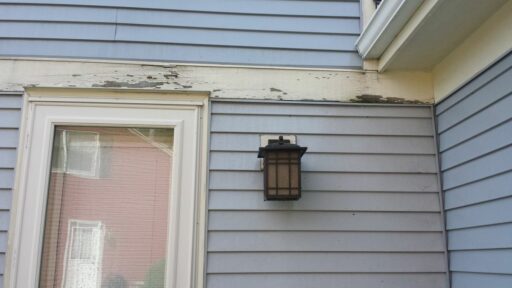As a painting contractor, staying organized is crucial for the efficiency and success of your business. From managing projects to ensuring quality control, there are several forms and documents that can streamline your operations. This article will outline the essential forms every painting contractor needs to maintain organization and provide high-quality service to clients.
Key Takeaways
- Maintaining a comprehensive project portfolio and organizing service categories are essential for efficient project and service management.
- A checklist for essential supplies and steps for preparing the painting area, including safety protocols, are vital for job preparation and area setup.
- Client engagement and documentation can be optimized with standardized consultation forms, service quotation templates, and feedback collection methods.
- Financial management is streamlined through the use of expense tracking sheets, invoicing and payment records, and financial planning tools.
- Quality control and performance review are ensured with standard operating procedures, quality assurance checklists, and post-project review plans.
Project and Service Management

Maintaining a Project Portfolio
A well-maintained project portfolio is essential for painting contractors to showcase their work, track progress, and manage client expectations. Organizing past and current projects into a comprehensive portfolio can significantly enhance operational efficiency and serve as a powerful marketing tool.
To start, categorize your projects by type, size, and client to make it easier to reference and update. For instance:
- Residential Interiors
- Commercial Exteriors
- Special Finishes
Each category should include key project details such as the scope of work, duration, materials used, and client feedback. This not only helps in managing ongoing work but also assists in analyzing performance and planning future projects.
Maintaining a detailed project portfolio helps in identifying trends and areas for improvement, ensuring that each project contributes to the growth and refinement of your business.
Remember to include post-project activities in your portfolio, such as post-project cleaning, which encompasses disposing of excess paint and removing painter’s tape. This demonstrates your commitment to a complete service offering and can be a deciding factor for potential clients.
Organizing Service Categories
For painting contractors, organizing service categories is crucial for both marketing and operational efficiency. By clearly defining service offerings, contractors can better communicate their expertise to potential clients and streamline their workflow.
Services can be broadly categorized into residential, commercial, and specialized services. Each category may include a variety of services such as exterior and interior painting, pressure washing, and remodeling services. It’s important to maintain a clear and concise list of services offered, which can be displayed on a website or in marketing materials.
Here’s an example of how service categories might be organized:
- Residential Services
- Interior Home Painting
- Exterior Home Painting
- Cabinet Painting
- Commercial Services
- Church & NonProfit Services
- Epoxy Pool Coating Service
- Lead Paint Removal
- Specialized Services
- Pressure Washing
- Textured Ceiling Removal Services
- Lime Wash & Masonry Paint
Ensuring that each service category is well-defined and accessible to clients will help in establishing a reputation as a Best Contractor with limited content and no specific information.
Streamlining Remodeling and Special Services
For painting contractors, streamlining remodeling and special services is a key factor in enhancing efficiency and client satisfaction. By categorizing services and creating a structured approach, contractors can ensure that each project is handled with the utmost professionalism.
- Residential Services: Focus on interior and exterior home painting, including specialized services like cabinet painting and textured ceiling removal.
- Commercial Services: Cater to businesses with services such as epoxy pool coating and pressure washing.
- Special Services: Offer unique options like lime wash, masonry paint, and lead paint removal.
Ensuring a systematic approach to remodeling and special services allows for better planning, execution, and client communication.
By adopting best practices for each service category, contractors can reduce turnaround times and improve overall project management. This not only streamlines the process but also builds a reputation for reliability and quality workmanship.
Job Preparation and Area Setup

Checklist for Essential Supplies
Before embarking on a painting project, it’s crucial to gather all necessary supplies to ensure efficiency and quality. A comprehensive checklist not only streamlines the process but also prevents mid-project disruptions due to missing items.
- High-quality paint and primer
- Paintbrushes, rollers, and extension poles
- Drop cloths or plastic sheeting
- Painter’s tape
- Drywall repair tools
- Ladders or scaffolding
- Safety equipment (goggles, gloves, dust mask)
Proper preparation of the painting area is key to a successful job. This includes clearing the space, protecting furniture with drop cloths, and ensuring all surfaces are repaired and clean before painting begins.
Planning your approach is also vital; starting with the ceiling and working in sections can help manage potential drips and maintain clean lines with the aid of painter’s tape. Remember, the right tools can make a significant difference in the outcome of your project.
Steps for Preparing the Painting Area
Before the first stroke of the brush graces a wall, meticulous preparation sets the stage for a flawless finish. Clear the area of furniture and obstructions, ensuring a spacious and safe environment to work in. Items that cannot be removed should be shielded with drop cloths or plastic sheeting to fend off any paint splatters.
Repairing and cleaning surfaces prior to painting is not just a recommendation; it’s a cornerstone of professional painting. Address any imperfections in the walls with drywall mud and tape, and ensure all surfaces are clean and smooth.
Following a systematic approach can significantly enhance efficiency and results:
- Gather all necessary supplies, including high-quality paint, brushes, rollers, and safety equipment.
- Protect floors and remaining furniture with drop cloths or plastic sheeting.
- Apply painter’s tape to edges and corners for sharp, clean lines.
- Start with the ceiling, moving to walls, and work in sections to maintain a wet edge.
- Be vigilant for drips and splatters, correcting them promptly to maintain a pristine finish.
Remember, patience and attention to detail during the preparation phase are investments that pay dividends in the quality of the final paint job.
Protective Measures and Safety Protocols
Ensuring the safety of both the painting team and the clients is paramount. Proper safety gear and protocols are essential to prevent accidents and maintain a professional work environment. A comprehensive safety plan includes the use of high-visibility safety vests or jackets, especially when working at heights, to ensure painters are easily seen and protected.
Safety measures should be clearly outlined and accessible to all team members. This includes protocols for roof access, which is a common task for painting contractors. The updated Roof Hatch Safety Rail, with its self-closing gate and two-rung ladder extension, is an example of equipment that enhances safety for those accessing roofs.
It is crucial to regularly review and update safety protocols to align with the latest industry standards and technologies. This proactive approach helps in building resilience against potential accidents and ensures compliance with building and fire protection systems.
Lastly, fall protection systems, such as truss-to-hatch and toeboards, are vital during both construction and maintenance phases. These systems provide security for workers against the risks associated with working at dangerous heights.
Client Engagement and Documentation

Client Consultation Forms
Client consultation forms are a critical tool for painting contractors to capture all necessary details before commencing a project. These forms help ensure that client expectations are clearly understood and agreed upon. They typically include sections for client information, project scope, color preferences, and special requests.
To stay organized, contractors should consider the following elements for their forms:
- Client’s personal and contact information
- Detailed description of the service to be provided
- Preferred dates and times for project commencement and completion
- Specific color schemes or brands requested by the client
- Any additional services or special considerations
By systematically collecting this information, contractors can create a comprehensive project plan that aligns with the client’s vision and minimizes the potential for misunderstandings.
It’s also important to include a section for terms and conditions, as well as a privacy policy to ensure compliance with legal requirements. Contractors should encourage clients to review these sections carefully before signing the form.
Service Quotation Templates
Service quotation templates are essential for painting contractors to provide clear and consistent pricing information to clients. A well-structured template ensures all necessary details are included and easily understood by the customer.
When creating a service quotation template, consider the following elements:
- Description of the painting services offered
- Breakdown of material costs
- Labor charges
- Any applicable taxes
- Total estimated price
- Optional add-ons and their costs
Remember, transparency in your quotations can build trust with clients and may lead to increased customer satisfaction and repeat business.
It’s also beneficial to include a section for any additional notes or special instructions related to the project. This can cover anything from specific color choices to the expected timeline for project completion. Providing a comprehensive and detailed quotation can help avoid misunderstandings and set clear expectations for both parties.
Job Completion and Feedback Collection
After the paint has dried and the tarps have been folded away, the job of a painting contractor is not yet complete. Collecting client feedback is crucial to the growth and improvement of your services. A structured approach to gathering and analyzing feedback can lead to actionable insights and enhanced customer satisfaction.
To ensure you’re capturing valuable data, consider implementing a feedback form that includes categories for different aspects of the service provided. This allows clients to provide specific comments on areas such as timeliness, cleanliness, and quality of work. Here’s an example of how you might categorize feedback:
- Quality of Service
- Project Management
- Communication
- Overall Satisfaction
By categorizing feedback, you can quickly identify common themes and areas for improvement. This process also makes it easier to follow up with clients who may have had specific issues or exceptional experiences.
Remember to review feedback regularly and integrate it into your business practices. This could involve revisiting your project portfolio to address recurring concerns or adjusting your service categories to better meet client needs. The goal is to create a cycle of continuous improvement that keeps clients coming back.
Financial Management and Invoicing

Expense Tracking Sheets
For painting contractors, meticulous expense tracking is crucial for financial health and accurate billing. Expense tracking sheets should be comprehensive, capturing every cost associated with a project, from paint and materials to labor and transportation.
To stay organized, consider categorizing expenses into groups such as materials, labor, travel, and miscellaneous. This can be done effectively using a table:
| Category | Description | Estimated Cost | Actual Cost |
|---|---|---|---|
| Materials | Paint, brushes, tarps, etc. | $ | $ |
| Labor | Hours worked by painters | $ | $ |
| Travel | Fuel, vehicle maintenance | $ | $ |
| Miscellaneous | Additional unforeseen expenses | $ | $ |
By regularly updating the expense tracking sheets, contractors can monitor budget adherence and identify areas where costs can be reduced.
It’s also beneficial to integrate these sheets with accounting software to streamline the process and ensure nothing is overlooked. Regular reviews of expense tracking can highlight trends and inform future quotes, contributing to a more sustainable business model.
Invoicing and Payment Records
Maintaining accurate invoicing and payment records is crucial for the financial health of any painting contractor business. These records not only facilitate timely payments but also serve as a reference for future projects and tax purposes. A well-organized invoice should include details such as the date, services provided, materials used, labor hours, and the total cost.
To ensure consistency and reduce billing questions, consider using a standardized invoice template. This approach improves clarity and presents a professional image to your clients.
Below is an example of how to structure an invoice for a painting job:
| Date | Description | Quantity | Unit Price | Total Price |
|---|---|---|---|---|
| 2023-04-15 | Interior wall painting | 10 hrs | $50/hr | $500 |
| 2023-04-15 | Paint supplies | 20 gal | $15/gal | $300 |
Remember to include payment terms, such as due dates and acceptable payment methods, to avoid any confusion. It’s also beneficial to keep digital copies of all invoices and payments for easy access and backup.
Financial Planning Tools
Effective financial planning is crucial for painting contractors to ensure long-term business sustainability. Financial planning tools help in forecasting future financial results and in tracking the actual performance against the budgeted figures. These tools can range from simple spreadsheet templates to sophisticated software solutions designed for the construction industry.
- Forecasting models for revenue and expenses
- Cash flow analysis spreadsheets
- Break-even analysis calculators
- Budget variance reports
By regularly updating financial plans and comparing them with actual outcomes, contractors can identify areas that require attention and adjust their strategies accordingly.
Utilizing these tools allows contractors to make informed decisions about investments, expansions, and resource allocations. It is advisable to review financial plans periodically to align with the ever-changing market conditions and internal business goals.
Quality Control and Performance Review

Standard Operating Procedures
Standard Operating Procedures (SOPs) are the backbone of a painting contractor’s service quality and consistency. Developing detailed SOPs ensures that every project meets the highest standards. These procedures should cover all aspects of a painting job, from surface preparation to the final touches.
A well-structured SOP might include the following sections:
- Project Assessment
- Surface Preparation
- Paint Application
- Cleanup and Disposal
- Final Inspection and Touch-Ups
It is crucial to regularly review and update SOPs to incorporate new techniques, materials, and client feedback, ensuring continuous improvement in service delivery.
For instance, the initial step in the SOP could align with the first phase of the painting process, where a thorough inspection of the project area is conducted. This step is vital to identify any necessary repairs before painting begins, as highlighted in a snippet from industry practices: ‘Step 1 in the home painting process we start by inspecting the entire project.’
Quality Assurance Checklists
Quality assurance checklists are vital for maintaining high standards throughout the painting process. They ensure that every aspect of the job meets the set criteria for quality, safety, and efficiency. A well-structured checklist can serve as a roadmap for the project, guiding contractors through each phase and minimizing the risk of oversights.
To create an effective quality assurance checklist, consider including categories such as surface preparation, paint application techniques, and cleanup procedures. This approach helps in systematically organizing tasks and verifying that each step is completed to satisfaction.
For instance, a checklist might include items like ensuring proper surface dryness before application, verifying paint consistency, and inspecting for uniform coverage. Here’s a simplified example of what such a checklist might look like in a table format:
| Task | Criteria | Verified By |
|---|---|---|
| Surface Preparation | No dust or debris | Inspector |
| Paint Application | Even coating | Supervisor |
| Cleanup | All areas clean | Team Leader |
Regular use of these checklists not only improves the quality of work but also builds client trust by demonstrating a commitment to excellence.
Post-Project Review and Improvement Plan
After the completion of a painting project, it’s crucial to conduct a post-project review to evaluate performance and identify areas for improvement. This process should be systematic and involve all team members to ensure comprehensive feedback.
The review should cover various aspects of the project, such as adherence to the quality assurance protocols, efficiency of the project delivery, and client satisfaction. A structured approach to gathering this information can be facilitated through a feedback form or a meeting with structured discussion points.
To foster continuous improvement, contractors should develop an improvement plan based on the insights gained from the review. This plan should outline actionable steps to enhance performance on future projects.
For instance, if the review highlights a need for better schedule management or risk management, the improvement plan could include specific training for the team or the adoption of new technologies like Building Information Modeling (BIM). By turning insights into action, contractors can elevate the quality of their service and client experience.
Conclusion
In conclusion, staying organized as a painting contractor is crucial for the efficiency and success of your business. By utilizing essential forms such as project portfolios, service agreements, and detailed planning documents, you can streamline your operations and ensure that every job is completed to the highest standard. Whether you’re painting high ceilings or tackling extensive remodeling projects, having a structured approach to your work will save time, reduce stress, and result in satisfied customers. Remember to invest in quality tools, plan your approach meticulously, and review your work thoroughly to maintain a reputation for excellence in the competitive field of painting contracting.
Frequently Asked Questions
What supplies do I need before starting a painting project?
Ensure you have high-quality paint and primer, paintbrushes and rollers with extension poles, drop cloths or plastic sheeting, painter’s tape, drywall mud and tape, ladders or scaffolding, and safety equipment like goggles, gloves, and a dust mask.
How should I prepare the area for painting?
Clear the room of furniture and obstacles, cover any remaining items with plastic sheeting or drop cloths, and repair and clean surfaces before you begin painting.
What is the best way to manage painting high ceilings and hard-to-reach areas?
Start with the ceiling to manage drips and splatters. Use scaffolding and extension ladders for high areas, and painter’s tape for corners and edges to achieve clean lines.
How can I ensure a professional finish when painting?
Apply multiple thin coats of paint rather than one thick coat for even coverage, and allow each coat to dry completely before applying the next. Review your work and touch up as needed.
What should be included in a painting contractor’s project portfolio?
A painting contractor’s project portfolio should include a variety of completed projects such as residential, commercial, and remodeling portfolios, as well as different services like interior and exterior painting, cabinet painting, and specialized services.
What are some essential painting services a contractor should offer?
A painting contractor should offer a range of services including residential and commercial painting, church and nonprofit services, exterior and interior painting, and other services like cabinet painting, decks and exterior staining, epoxy pool coating, lead paint removal, and pressure washing.





